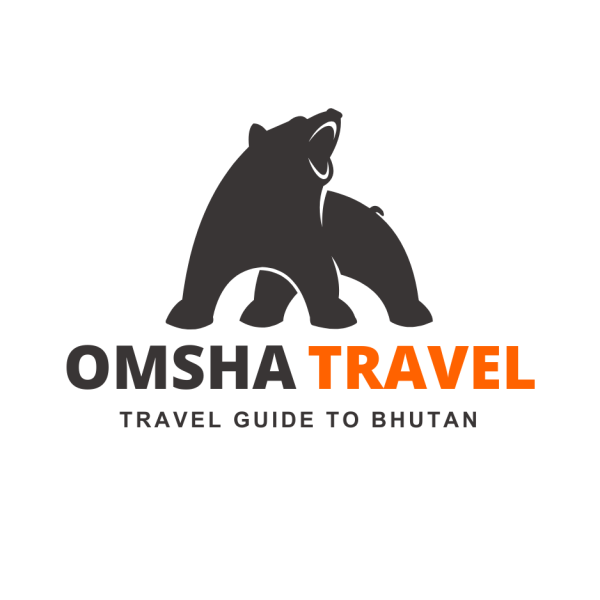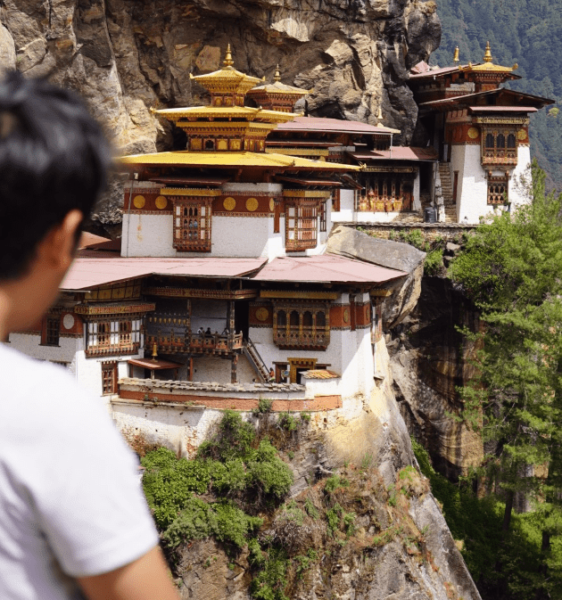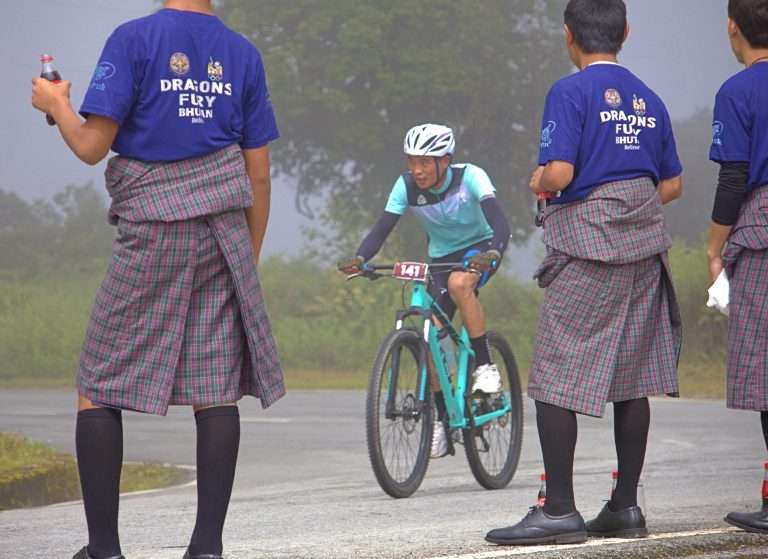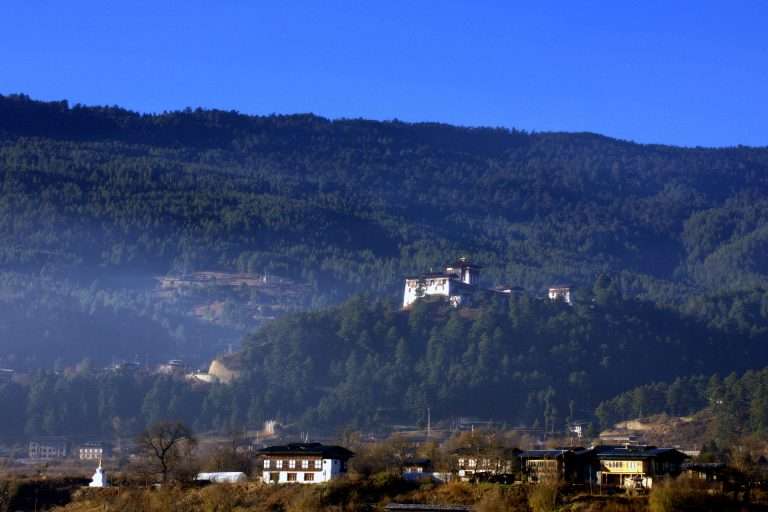Thinking of visiting Bhutan? Here’s an idea: time your trip around Thimphu Tshechu, Bhutan’s most iconic and vibrant religious festival. Held every autumn in the capital city of Thimphu, this multi-day event is the perfect blend of spiritual depth, colorful traditions, and rich Bhutanese culture.
From sacred mask dances to vibrant cultural performances, the festival offers a unique glimpse into Bhutan’s rich spiritual heritage. Planning your trip around Thimphu Tshechu ensures you not only witness this remarkable event but also explore the cultural treasures of Thimphu and beyond.
In this guide, we’ll help you plan the perfect Bhutan trip centered around the Thimphu Tshechu.
When and Where Is Thimphu Tshechu Celebrated?
Location: Tashichho Dzong
The festival is held in the courtyard of Tashichho Dzong, the beautiful fortress-monastery that houses both government offices and the summer residence of the Chief Abbot.
Festival Date & Timing
Thimphu Tshechu typically takes place in September or October, depending on the Bhutanese lunar calendar. The festival spans three days. For 2025, the festival falls around October 2–4, but dates can vary each year. It’s best to confirm with a local tour operator or check the official Bhutan Tourism calendar when planning.
Most performances begin in the morning and last till the late afternoon. The final day is the most auspicious and features the display of a massive silk Thangka (Thongdrel) of Guru Rinpoche.

Why You Should Experience Thimphu Tshechu
Vibrant Masked Dances (Cham)
Watch monks and laymen perform ancient dances wearing colorful masks, flowing brocade robes, and elaborate headpieces. Each dance tells a story — some comic, some dramatic, and some deeply mystical.
Traditional Costumes and Music
Locals come dressed in their finest Gho and Kira, and traditional music accompanies the performances. The atmosphere is festive and deeply spiritual all at once.
Social and Community Gathering
This is a time when entire families reunite, pack picnic lunches, and come together to celebrate. As a tourist, you’ll feel like you’re stepping into a live cultural tapestry.
How to Plan Your Trip Around Thimphu Tshechu
Book Your Tour Package Early
Festivals like Thimphu Tshechu attract high demand, with flights and hotels often selling out early — so it’s best to plan your trip at least 6–7 months to a year in advance.
Choose the Right Dates
Get the confirmed festival dates before setting your flight. While exact dates follow the lunar calendar, they usually fall between mid-September to early October.
Apply for a Visa
All foreigners need a Bhutan visa, which your tour operator will arrange as part of the package. However, Indian nationals do not need a visa but must obtain a travel permit to enter Bhutan, which will be arranged by your tour operator as part of your travel package.
Suggested Itinerary Around Thimphu Tshechu
Here’s a sample 7-day Bhutan itinerary centered around the Thimphu Tshechu:
Day 1: Arrival in Paro – Transfer to Thimphu
Day 2–4: Attend Thimphu Tshechu at Tashichho Dzong
Day 5: Drive to Punakha via Dochula Pass – Visit Chimi Lhakhang and Punakha Dzong
Day 6: Return to Paro – Visit Kyichu Lhakhang and Paro Rinpung Dzong
Day 7: Hike to Tiger’s Nest Monastery (Taktsang)
Day 8: Departure
What to Pack for the Festival
Dress Code for Dzongs
Wear long sleeves and full-length pants. You’ll need to remove your hat and shoes when entering sacred spaces.
Essential Items
- Warm clothes (Thimphu can get chilly)
- Sunscreen and sunglasses
- A good camera
- Comfortable walking shoes

Best Places to Visit While in Thimphu
- Buddha Dordenma: One of the world’s tallest Buddha statues.
- National Memorial Chorten: A revered religious site.
- Folk Heritage Museum: Insight into Bhutanese rural life.
- Centenary Farmers Market: A bustling spot for local flavors.
Tips for Capturing Stunning Festival Photos
- Arrive early for the best vantage point.
- Use a zoom lens to capture expressions.
- Focus on faces and details — the hands, the fabrics, the movement.
Local Food to Try During Thimphu Tshechu
- Ema Datshi: Bhutan’s national dish – spicy cheese with chilies.
- Kewa Datshi: Potato and cheese stew.
- Suja: Butter tea to warm your soul.
- Ara: A local homemade alcoholic beverage.
Booking With a Local Tour Operator
Guided Tours necessary
Guided tours are mandatory for all international tourists attending the Thimphu Tshechu, as per Bhutan’s tourism policy. They handle permits, accommodation, transport, and provide valuable cultural insight.
Why You Shouldn’t Miss Thimphu Tshechu
Attending Thimphu Tshechu is a chance to witness Bhutan’s living heritage in its most vibrant form. It’s not just a festival — it’s a deep spiritual celebration and social gathering that reflects the heart of Bhutanese identity.
Whether you’re a photographer, culture enthusiast, spiritual traveler, or curious explorer, Thimphu Tshechu will leave you inspired and awed.
FAQs About Thimphu Tshechu
Can I attend the entire Tshechu as a tourist?
Yes! You can attend all three days. A guide is mandatory. Your guide will help you navigate the best viewing spots and timings.
Are there entrance fees to attend the Tshechu?
Yes, there is an entry fee to visit Tashichho Dzong, where the Thimphu Tshechu takes place. However, this fee is included in the tour package you book.
How do I get the exact festival dates for next year?
Check with a licensed Bhutanese tour operator like OMSHA Travel or the Tourism Council of Bhutan’s website.





